√99以上 appdata local temp outlook logging 185765-Appdata local temp outlook logging 削除
In your computer's %Temp% folder, you notice a very large file (for example, more than 1 GB) that's named Outlookexelog Note The %Temp% folder is typically found at C\Users< user name >\AppData\Local\TempIt's deadly simple To access any user's AppData folder, simply type the following variable either in Windows Explorer's Address Bar or from Start > Run (WinKey R) %appdata% Make sure you include both "%" symbol at the front and the end, as it's the symbol that tells the system to go into the folder you specified%userprofile% indicates where the user profiles are stored %localappdata% indicates where the local appdata is stored, usually at c\users\username\appdata\local %computername% %temp% indicates where the temporary folder is located To find the full list of the variables that are available to you, simply use the command line "set"

Citrix Profile Management 12 Carl Stalhood
Appdata local temp outlook logging 削除
Appdata local temp outlook logging 削除-In Vista, Windows 7/8/10 and newer, Outlook's secure temp folder is at C\Users\username\AppData\Local\Microsoft\Windows\Temporary Internet Files\ContentOutlook\8A0VMD3A, where 8A0VMD3A can be any random characters Type or paste this shortcut into the address bar of File Explorer to open the locationLocate the section labeled Other and check the box labeled Enable troubleshooting logging (requires restarting Outlook) Exit and restart Outlook After you have turned on logging, the files will be stored in a folder in the folder By default, the Temp folder is located in the \AppData\Local folder c\Users\username\AppData\Local\Temp


How To Enable Egress Client Logging
コンピューターの% Temp% フォルダーに、Outlookexe log という名前の非常に大きなファイル (たとえば、1 GB を超える) があることがわかります。 注意 % Temp% フォルダーは、通常、C\Users \AppData\Local\TempOpen the temp folder in Outlook You can do as follows to open the temp folder in Outlook as follows 1 Press the Windows R keys at the same time to open the Run dialog box, and type regedit into the Open text box See screenshot 2 Click the OK button in the User Account Control dialog box 3With Perfmon running outlookexe is writing to a db file in %temp% continuously causing disk utilisation by Outlook to be around 75% 100% If I turn off the Teams addin in Outlook then disk utilisation drops to around 01%
For most users, the location is "AppData/Local/Temp" while for others it might be "LocalAppData/Temp" The size of the folder can vary from user to user It actually depends on the number of applications installed on your computer and the period for which the operating system has been installedSee the log for details (C\ProgramData\chocolatey\logs\chocolateylog) I've tried adding dotnet47 as dependency (which is correct), but didn't help I think the contents of C\ProgramData\chocolatey\logs\chocolateylog might easily be inserted into the logging of the automatic validation (not volunteering, just getting started with chocolatey)In your computer's %Temp% folder, you notice a very large file (for example, more than 1 GB) that's named Outlookexelog Note The %Temp% folder is typically found at C\Users\\AppData\Local\Temp Cause This problem may occur if you turned on TCOTrace logging by enabling the following registry settings
The Value Data folder will be a local directory that you can navigate to It will look similar to this C\Users\USER\AppData\Local\Microsoft\Windows\Temporary Internet Files\ContentOutlook\2HN17HON\ So let's go ahead and navigate to this folder in your computer!Instructions apply to Outlook 19, 16, 13, 10, and Outlook for Microsoft 365 Delete the Outlook Cache Removing the cache in Outlook doesn't delete emails, contacts, or other useful informationYou won't be able to clear Outlook's cache if Outlook is open on your computer 1 On your keyboard, press the "Windows" key (the key labeled with the Windows logo) and the "R" key at the same time



Office 365 Troubleshooting Options



How To Export Hotmail Email Contacts And Calendar To Gmail Yahoo Pst Pdf Eml
Del "C\Users\username\AppData\Local\Temp\Outlook Logging\**" /q What I noticed today, while I was onsite with the client was the the files stopped logging in Outlook Logging, because it now had direct connection with the "missing" mailboxIn the registry editor, click Ctrlf to start a search Paste in the policy rule id that you copied from the Windows Event log and click the Find button When the registry entry for the policy is found, it will contain a number of key values The key called ItemData is the one which likely has the value %windir%\tempDoubleclick Logging, and then click Enabled In the Logging box, enter the options you want to log The log file, Msilog, appears in the Temp folder of the system volume For more information about MSI logging, see Windows Help To do this, search by using the phrase msi logging, and then select Managing options for computers through Group



How To Synchronize Outlook Data With Yahoo 15 Steps


Outlook Does Not Display Images In Email Windows Os Hub
By default, your Temp folder is located in your \AppData\Local folder c\Users\username\AppData\Local\Temp By default, the Local Settings and AppData folders are hidden To display hidden folders in Windows, do the following Temp/Outlook Logging firstrunlog Yes Yes Yes Administrator informationThe AppData folder includes application settings, files, and data unique to the applications on your Windows PC The folder is hidden by default in Windows File Explorer and has three hidden subfolders Local, LocalLow, and Roaming You won't use this folder very often, but this is where your important filesYou may have to disable a setting in your explorer settings to view the folder



How To Synchronize Outlook Data With Yahoo 15 Steps



Logoff Script To Clean Out Temp Files Active Directory Gpo
With Perfmon running outlookexe is writing to a db file in %temp% continuously causing disk utilisation by Outlook to be around 75% 100% If I turn off the Teams addin in Outlook then disk utilisation drops to around 01%On computers that are running Windows Vista or Windows Server 08, the installer log is located in the following directory C\Users\{UserName\AppData\Local\Temp To open this directory, click Start , type %temp% in the Start Search box, and then press ENTER Note This information assumes that Windows is installed to the default drive CMethod 1 Accessing using %appdata% Normally the AppData folder resides in your user folder which is the same directory that contains all your documents, music, pictures, etc However, instead of navigating through the File Explorer to the specific location, you can easily use roaming to access the folder


How To Enable Egress Client Logging



Outlook Imap Stuck When Sync Inbox Microsoft Community
If Outlook is using cached connection mode to the Microsoft Exchange server and is having connection issues, then it can prevent the user from logging into the system Corrupted/Conflicting Temp Folder Contents Like any other Windows application, Outlook uses the Windows Temp folder to store its temporary files If this folder has contents that are corrupt or conflict with Outlook, then it can be the reason why you are having problems logging inNavigate to your working temp directory by entering the following into your elevated command prompt cd C\Users\username\AppData\Local\Temp In example directory above replace `username` with your windows login name Now paste the following and hit Enter key attrib r %appdata%\\Local\Temp\*db*Page 1 of 2 Need a check posted in Virus, Trojan, Spyware, and Malware Removal Help Hi, From time to time my AM is giving me this message, with a different temp file What is it exacly?



Outlook Client Logging


Outllook Office Excel Big Log File Temp Folder Disk Space Full
I have noticed that a huge temp file is randomly creating under "C\Users\username\AppData\Local\Temp" location and size of the file is limited only by the free space available This is happening on Windows XP, Windows Vista and Windows 08 R2 server operating system and I could not figure it out which application/process is creating itYou can also access the AppData folder directly using the AppData system variable Search for "Run" in the windows search as shown below, or press the Windows R button to open the Run App In the run app text box, enter "%AppData%" and click OK Windows will directly open up the Roaming folder which is inside the AppData folder Wrap upIn the log, I would filter for only the Access process and see if you receive any Access Denied messages in the log file for the problematic user C\Users\\AppData\Local\Temp\msoAF23tmp Best Regards, Nathan O Microsoft Online Community Support



How To Import Email Folders To Outlook Com From Lotus Notes



Finding Outlook Temporary Folder For Email Attachments Microsoft Community
The log files are stored in subfolders of the Temp folder By default, this folder is locatedMicrosoft Support Attachments Remain in the Outlook Secure Temporary File folder When You Exit Outlook 10, Outlook 07, or Outlook 03 Warnings Information in this article applies to OutlookAs its name implies, the AppData/Local/Temp folder contains temporary files Those files contain temporary information while a process is creating other files Normally, Windows deletes those files once the program closes Temporary files can recover lost information in case Windows or a program shuts down abnormally In addition to TMP, or



Outlook Connector Troubleshooting Workbooks Support



Need A Check Virus Trojan Spyware And Malware Removal Help
The user /appdata /local/ temp is a tricky one Outlook stores its 'backuppst' there (unless you moved it in settings) Other programs can leave "active" files and folders thereLog file checklist Troubleshoot without logging Ensure that you remove the appdata\local\packages folder from the exclusion lists before you add it to Folders to mirror Appdata\Local\Microsoft\Windows\UsrClassdat* Outlook and Office 365After installing the update, please check the status in log file created under "C\Users\%USER%\AppData\Local\Temp\ tls_patch_FY16_log" folder Check the log file with name "log_date_timetxt" for the success/failure message as mentioned below point 53 or 54



10 Ways To Free Up Hard Drive Space On Windows Ghacks Tech News



How To Fix Outlook Connectivity Problems
%userprofile% indicates where the user profiles are stored %localappdata% indicates where the local appdata is stored, usually at c\users\username\appdata\local %computername% %temp% indicates where the temporary folder is located To find the full list of the variables that are available to you, simply use the command line "set"Select On, using the dropdown menu for Logging Once enabled, the Open in Explorer option will appear beside the Logging status Clicking on Open in Explorer will open up the location of where your logs are saved By default this will be in C\Users\USER\AppData\Local\Temp\switch\logsOne of my office365 user is having issue with outlook, so i have enabled Outlook Troubleshooting Logging, i can see log file and etl files under the below path, how to read the etl files C\Users\John\AppData\Local\Temp\Outlook Logging


Outlook Logging Folder Consumes All Disk Space



Outlook 16 Enable Disable Global Logging
Hello,When I do a quick scan I always get these 3 things that come upA file and memory process called csrssexe trojan agentThen a malware trace registry keyI then continue to delete using malwarebytes however upon reboot the same 3 things pop up again Its really starting to worry meHere isIt will empty the AppData\Local\Temp area and many others as well This is how I have mine setup Attachment 1904 Attachment 1905 hi doesn't clean my c\Users\User\AppData\Local\Temp\ , i'm talking about ccleaner last version My System Specs 17 Oct 13 #7 Ztruker Windows 10 Pro X64 6,285 postsLook for the AppData folder Its icon will be faded Doubleclick to open it 2 Direct access Users can also directly open the AppData folder It isn't necessary to go through the user folder Tap the WinR keyboard shortcut to open the run box In the run box, enter %AppData%, and tap the Enter key



Temp Outlook Logging Etl


Outlook Logging Folder Consumes All Disk Space
Update 11// All the latest versions of Microsoft Outlook, including Outlook 16, 19, O365, and Outlook for Microsoft 365, use the same registry location for the OLK folderAlso you can try installing the C runtime manually from the link provided in the log prior to installation C\Users\zahraz\AppData\Local\Temp\MSCRM_{79FCC950B2FAB4D5B5}\vcredist_x86exeC\Users\mrawlings\AppData\Local\Temp\Outlook Logging\OutlookTetl C\Users\mrawlings\AppData\Roaming\Citrix\SelfService\Icons\outlook13_ico C\Users\mrawlings\AppData\Roaming\Microsoft\Internet Explorer\Quick Launch\Microsoft Outlooklnk



Red X S In Email Messages



Fulleventlogview Event Log Viewer For Windows 10 8 7 Vista
Table containing file paths and shortcuts for log filesType " regedit ", then select " OK " to open the Registry Editor Navigate to HKEY_CURRENT_USER \ Software \ Microsoft \ Office \ 160 \ Outlook \ Options \ Mail Look for the key " EnableLogging "and double click on it If it doesn't exist, create it by rightclicking the " Mail " folder and choose " New " > " DWORD (32bit value) "As its name implies, the AppData/Local/Temp folder contains temporary files Those files contain temporary information while a process is creating other files Normally, Windows deletes those files once the program closes Temporary files can recover lost information in case Windows or a program shuts down abnormally In addition to TMP, or



Strange Recent Items When Attaching To Outlook Super User


How To Enable Egress Client Logging



Troubleshooting A Failed Installation Search Support
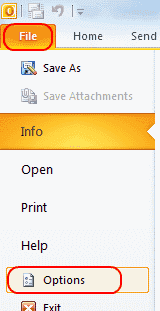


Outlook 16 Enable Disable Global Logging



Backup 101 Windows Files And Folders You Should Always Back Up



Find The Microsoft Outlook Temporary Olk Folder


How To Convert Mac Outlook Mailboxes To Windows Outlook


How To Block Viruses And Ransomware Using Software Restriction Policies Windows Os Hub


Outlook Calendar Connection To Sharepoint Does Not Sync All Items



Fslogix Container Office Profile In Citrix Environments Deyda Net



Deploy And Troubleshoot Office 365 Proplus Updates With Configmgr 2 2 Deploywindows



Reporting A Problem With Hcl Traveler For Microsoft Outlook



Windows 10 h2 October Update Or Earlier And Outlook Howto Outlook



Deploy Office 16 Through Sccm Sccm Microsoft Endpoint Manager Enterprise Mobility Security



Temp Outlook Logging Etl



Enable And Collect Logs For Profile Creation Issues Outlook Microsoft Docs



How To Fix Outlook Connectivity Problems


Tricky Virus Malware Windows Process Manager Please Help Resolved Malware Removal Logs Malwarebytes Forums



Get Easy Methods To Import Pst File To Outlook Web Access
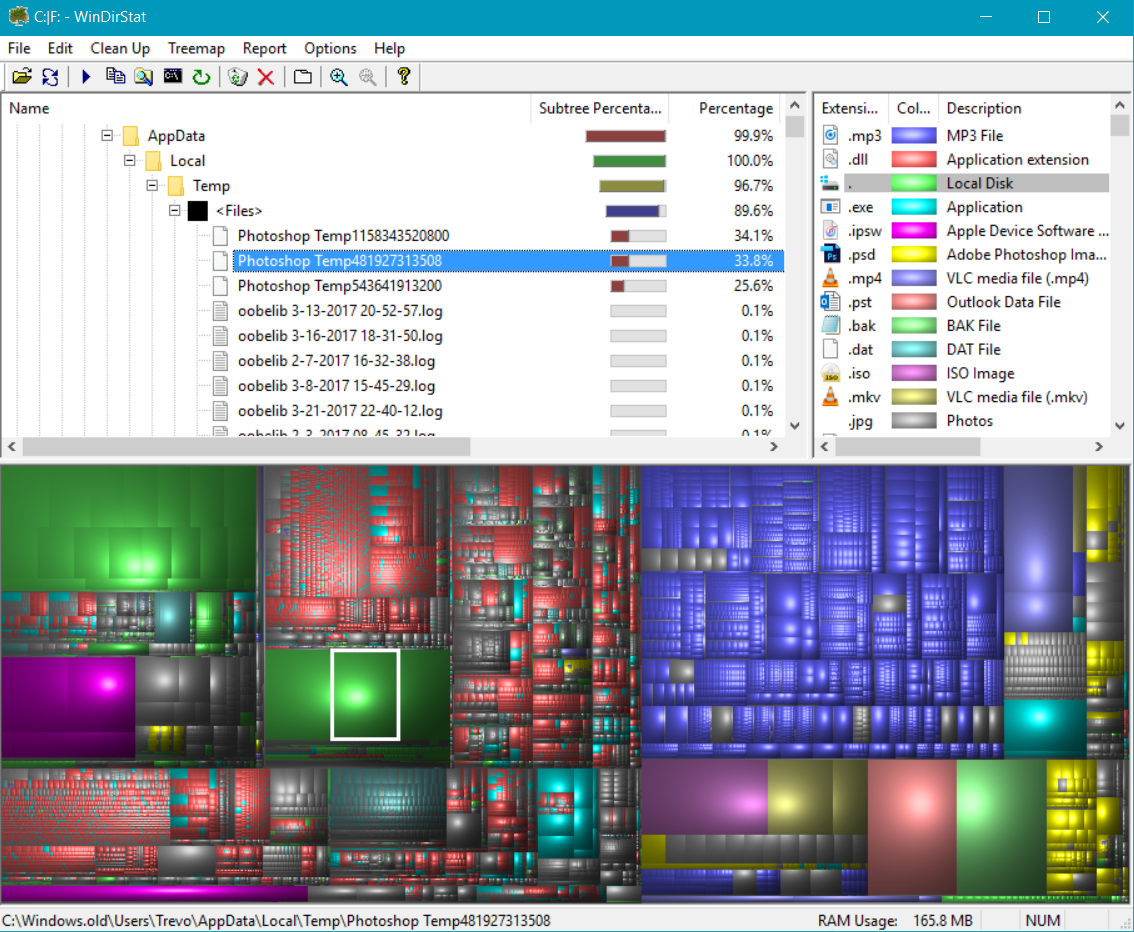


Solved From Ssd To Hd Lack Of Space Adobe Support Community


Fix Dragging And Dropping Outlook Messages In Quick Succession Results In File Lock Message



Using App Passwords For A Secure Connection Between Dynamics 365 And External Apps Powerobjects



How To Fix Outlook Connectivity Problems



Fslogix Containers Search Index Considerations And Troubleshooting James Kindon



Installation Of Citrix Files For Outlook



Is It Safe To Delete Appdata Local Temp Super User



Everything You Wanted To Know About Virtualizing Optimizing And Managing Windows 10 But Were Afraid To Ask Part 6 Roaming Htg



Find The Microsoft Outlook Temporary Olk Folder



How To Resolve Cannot Start Microsoft Office Outlook Problem



Uninstall Updates In Office Click To Run



User Group Policies Not Applying When Using Fslogix Profile Containers James Rankin Com



Temp Outlook Logging Etl



Troubleshooting Error Cannot Write To Log File Access Denied Druva Documentation



Disk Monitoring Directory Monitoring Corner Bowl



Fix The Time Limit For Logging On Was Reached In Outlook Appuals Com



Optimization For Microsoft Teams



Popup Error Message When Booting Computer Asussetup Log Iniis Lost Next Century Support



How To Speed Up Windows 10 Win2learn Com



New Seafile Add In For Microsoft Outlook Ready For Testing Implemented Seafile Community Forum


Outlook Logging Folder Consumes All Disk Space



How To Access Emails Of Outlook To Office 365 Cloud Full Solution Whatech



Steps To Create Firefox Profile For Automation Testing By Nex Software Testing Company Software Testing Automation Profile



Outlook Logging In Temp



How To Resolve Cannot Start Microsoft Office Outlook Problem



Outlook 03 Smtp Configuration



How To Resolve Cannot Start Microsoft Office Outlook Problem



Find The Log Files Of Windows And Other Software Ms Office



Here Is How You Can Repair Data From Outlook Bak File For Free



Find The Microsoft Outlook Temporary Olk Folder



User Group Policies Not Applying When Using Fslogix Profile Containers James Rankin Com



Imis Desktop And Customer Portfolio Crashes Csi Docs
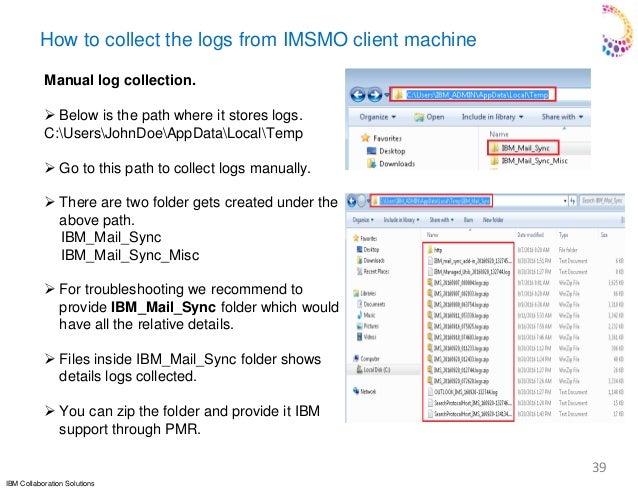


Ibm Mail Support For Microsoft Outlook



Password Stealer Trojan Malware Analysis Malware Analysis



Include And Exclude Folders In Roaming User Profiles 4sysops


Outlook 16 And 19 Can T Connect With Local Install Of Exchange 16 On Windows Server 12r2



Popup Error Message When Booting Computer Asussetup Log Iniis Lost Next Century Support



Outlook Plugin Troubleshooting Redbooth Help



Citrix Profile Management 12 Carl Stalhood



Web Analytics Tools Collab365 Directory Collab365 Directory



Different Methods To Convert Pst To Csv Manually



Fslogix Container Office Profile In Citrix Environments Deyda Net



How To Access User Profile S Appdata Folder The Easiest Way In Windows 7 Nextofwindows Com



Can T Install Business Contact Manager For Microsoft Outlook 10 Techyv Com



Ppt Tips To Troubleshoot Ms Calendar Woes Powerpoint Presentation Free Download Id



What Is Appdata Local Temp Guest Bmp Microsoft Community



Fix Word Could Not Create The Work File When Opening Word Documents Winhelponline
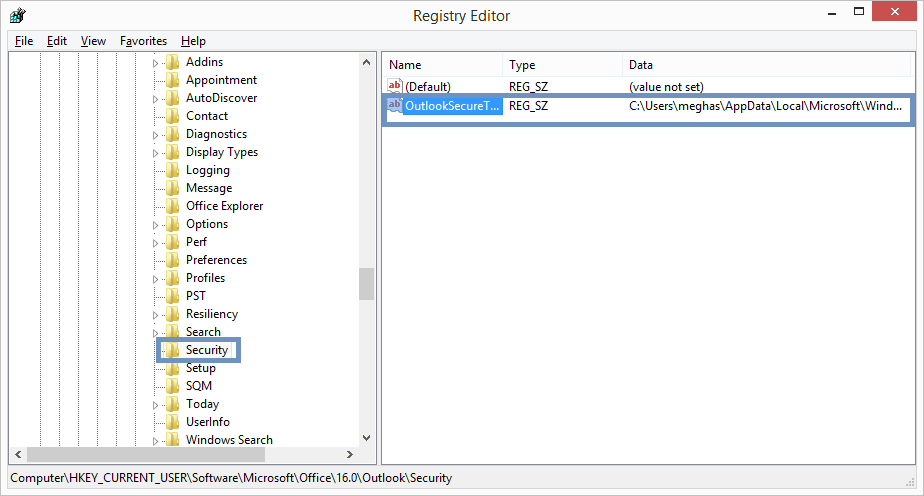


How To Delete Outlook Temporary Files In Windows 10



Ff3e8e5ceedfcccf1ebd76aad7340c364d7d52d415bee6364db9555 Any Run Free Malware Sandbox Online



D6eb6a322fb657f19dd6636acd1d0cce18e2b5cc75f5bf00e37d034c6e Any Run Free Malware Sandbox Online



Log Book Guide To Excel Outlook Email Delivery Automation Via Python By Dip Ranjan Chatterjee Towards Data Science
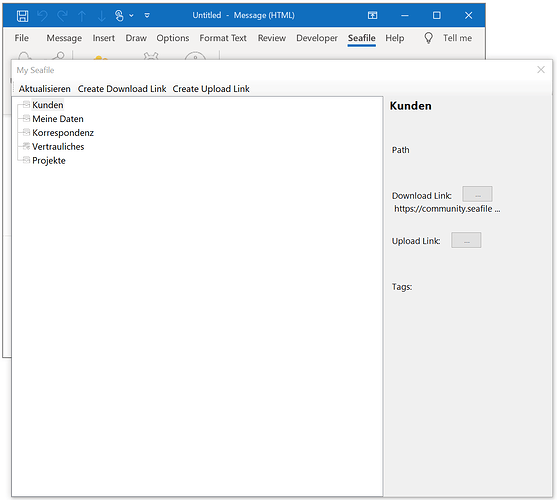


New Seafile Add In For Microsoft Outlook Ready For Testing Implemented Seafile Community Forum



Citrix Profile Management 12 Carl Stalhood



Fix The Time Limit For Logging On Was Reached In Outlook Appuals Com


Www Virusbulletin Com Uploads Pdf Magazine 19 1910 Reason Save Yourself Malware Pdf



Clear Temporary Files On Windows 7 College Of Medicine Tucson


How To Enable Egress Client Logging



Exporter Application To Shift Outlook Pst Files Into Gmail Files Format



Roaming Profiles And Start Tiles Tiledatalayer In The Windows 10 1703 Creators Update 4sysops


コメント
コメントを投稿